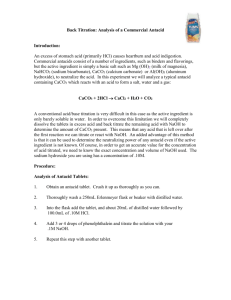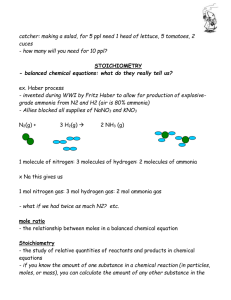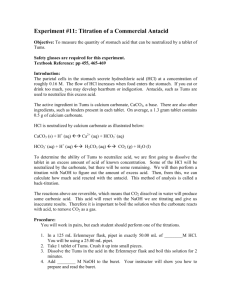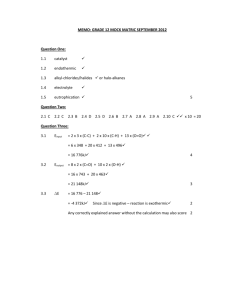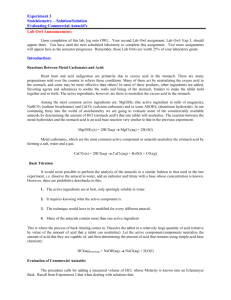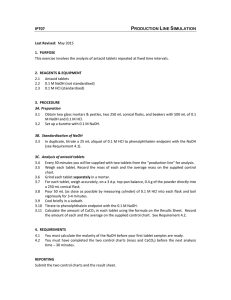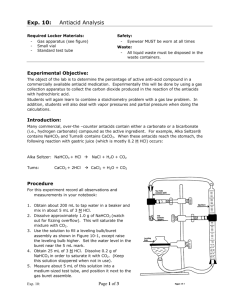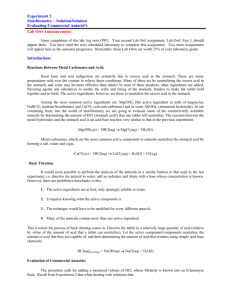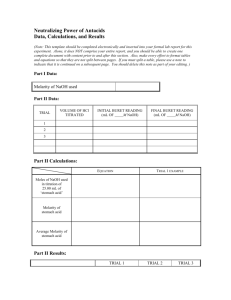Chemistry of Our Environment
advertisement
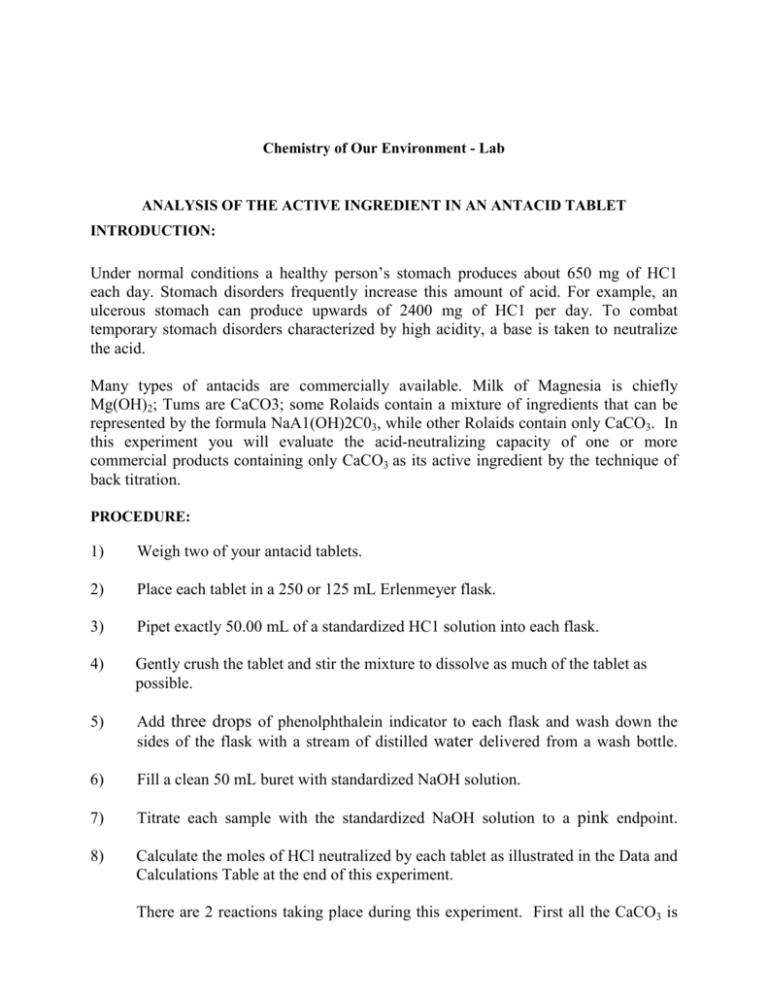
Chemistry of Our Environment - Lab ANALYSIS OF THE ACTIVE INGREDIENT IN AN ANTACID TABLET INTRODUCTION: Under normal conditions a healthy person’s stomach produces about 650 mg of HC1 each day. Stomach disorders frequently increase this amount of acid. For example, an ulcerous stomach can produce upwards of 2400 mg of HC1 per day. To combat temporary stomach disorders characterized by high acidity, a base is taken to neutralize the acid. Many types of antacids are commercially available. Milk of Magnesia is chiefly Mg(OH)2; Tums are CaCO3; some Rolaids contain a mixture of ingredients that can be represented by the formula NaA1(OH)2C03, while other Rolaids contain only CaCO3. In this experiment you will evaluate the acid-neutralizing capacity of one or more commercial products containing only CaCO3 as its active ingredient by the technique of back titration. PROCEDURE: 1) Weigh two of your antacid tablets. 2) Place each tablet in a 250 or 125 mL Erlenmeyer flask. 3) Pipet exactly 50.00 mL of a standardized HC1 solution into each flask. 4) Gently crush the tablet and stir the mixture to dissolve as much of the tablet as possible. 5) Add three drops of phenolphthalein indicator to each flask and wash down the sides of the flask with a stream of distilled water delivered from a wash bottle. 6) Fill a clean 50 mL buret with standardized NaOH solution. 7) Titrate each sample with the standardized NaOH solution to a pink endpoint. 8) Calculate the moles of HCl neutralized by each tablet as illustrated in the Data and Calculations Table at the end of this experiment. There are 2 reactions taking place during this experiment. First all the CaCO3 is neutralized by the HCl, according to this equation: CaCO3 + 2 HCl ! CaCl2 + H2O + CO2 During the titration the following reaction takes place: HCl + NaOH ! NaCl + H2O Determination of Moles of HCl Neutralized by Antacid Tablet DATA and CALCULATIONS Trial 1 Trial 2 A) Mass of Tablet _________ B) Final Buret Reading ________mL ________mL C) Initial Buret Reading ________ mL ________ mL D) Volume of NaOH used (B C) ________ mL ________ mL E) Liters of NaOH used ( D /1000) _________ L _________ L F) Moles of HCI used ( ________ mol _________ mol G) Moles of NaOH used ( H) Moles of acid neutralized per tablet ( F G) I) Average moles of acid neutralized - MHCI x 0.050) MNaOH x E) _________ ________ mol _________ mol - ________ mol _________ mol _______ mol Your instructor will provide each of you with the cost per tablet for your sample of antacid. The cost per mole of HCl neutralized can then be calculated using the following formula: Moles of HCl neutralized per penny = moles of HCl neutralized per tablet ( I ) ! cents per tablet Compare your results to students with other brands. Which is the most cost effective brand?
